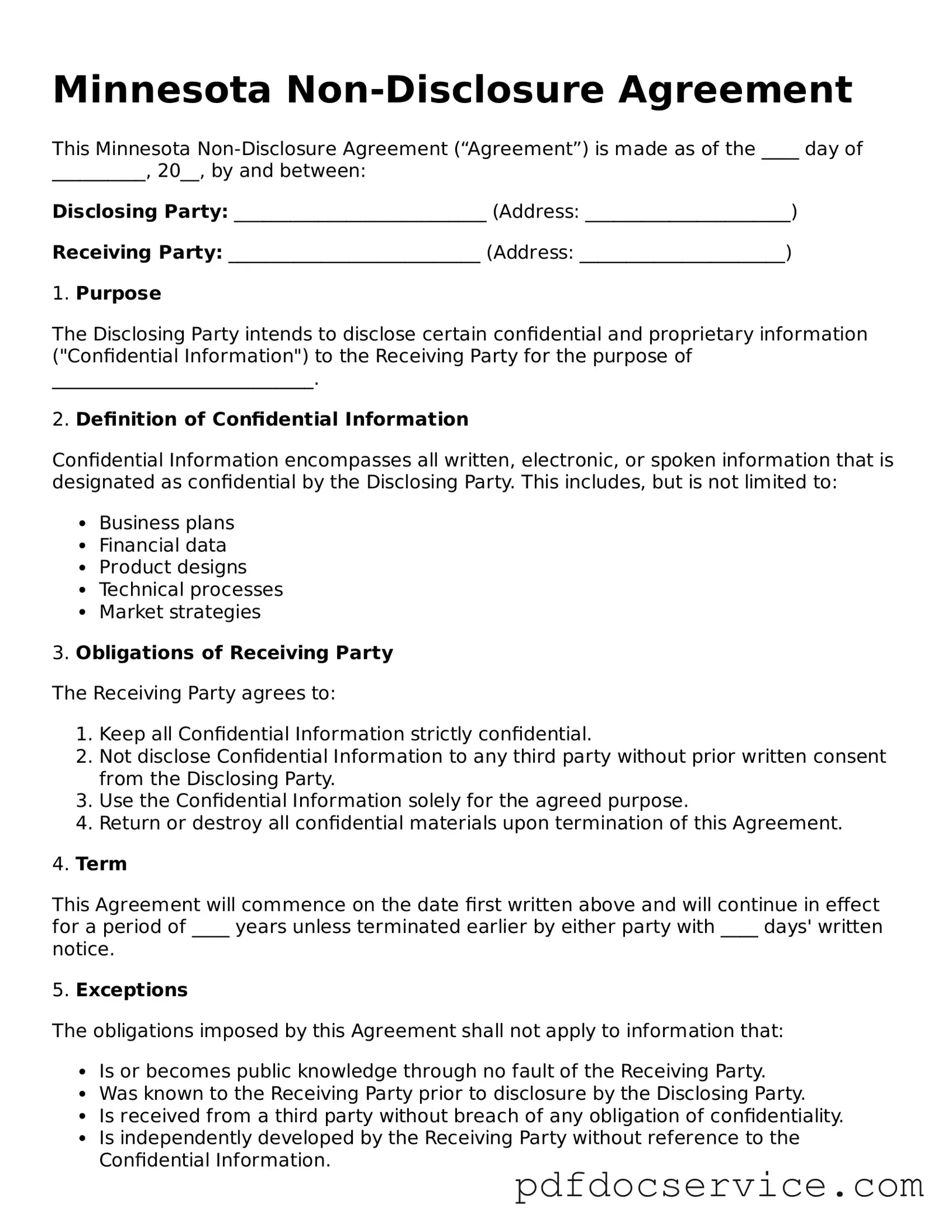What is a Minnesota Non-disclosure Agreement (NDA)?
A Minnesota Non-disclosure Agreement is a legal contract designed to protect confidential information shared between parties. It ensures that sensitive information remains private and is not disclosed to unauthorized individuals or entities.
When should I use a Non-disclosure Agreement?
An NDA should be used when you are sharing confidential information with another party. This can occur in various situations, such as:
-
Business partnerships
-
Employment relationships
-
Joint ventures
-
Product development discussions
Commonly protected information includes trade secrets, business plans, financial data, customer lists, and proprietary technology. Essentially, any information that gives a business a competitive advantage can be safeguarded under an NDA.
How long does the confidentiality obligation last?
The duration of the confidentiality obligation varies and should be clearly stated in the NDA. Generally, it can last for a specific period, often ranging from two to five years, or indefinitely for certain types of sensitive information.
Are there any exceptions to the confidentiality obligation?
Yes, there are exceptions. Information that is:
-
Publicly available
-
Already known to the receiving party
-
Independently developed by the receiving party
-
Disclosed by a third party without a confidentiality obligation
These scenarios may not be subject to the NDA's restrictions.
Can I enforce a Non-disclosure Agreement in Minnesota?
Yes, NDAs are enforceable in Minnesota as long as they are reasonable in scope and duration. If a party breaches the agreement, the injured party may seek legal remedies, including damages or injunctive relief.
What should I include in my Non-disclosure Agreement?
Key components of an NDA typically include:
-
Definition of confidential information
-
Obligations of both parties
-
Duration of confidentiality
-
Permitted disclosures
-
Consequences of breach
Do I need a lawyer to draft a Non-disclosure Agreement?
While it is possible to find templates online, consulting a lawyer is advisable. A legal professional can tailor the NDA to your specific needs, ensuring it complies with Minnesota laws and effectively protects your interests.
What happens if someone breaches the NDA?
If a breach occurs, the injured party can take legal action. This may involve seeking monetary damages or requesting a court order to prevent further disclosure of the confidential information. It is crucial to document any breach and consult with legal counsel for guidance.
